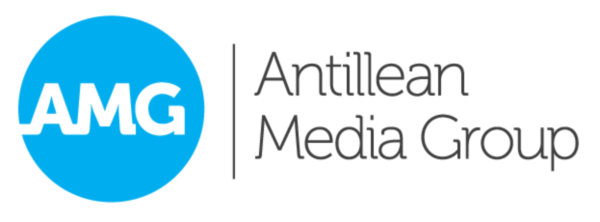BY DAVID JESSOP — Each time CARICOM heads of government meet, they include language in their final communiqué on the Guyana-Venezuela border dispute. However, at their encounter this week in Barbados, the matter will no longer be about a dormant claim, but one that is alive and potentially dangerous.
The strength of their response will demonstrate whether CARICOM has the unity and willingness to address the significant questions that have been raised by the decision of an economic ally and regional neighbour, to promulgate a decree law that, in part, claims the offshore territory of three CARICOM nations.
Venezuela claiming territories by decree
On May 26, Venezuelan president Nicolas Maduro gazetted a decree which, for reasons of territorial defence, created an “Atlantic coast of Venezuela”. This new law contained coordinates and language that effectively claimed sovereignty over the offshore territorial waters of the Essequibo region of Guyana, a small part of Suriname’s exclusive economic zone, and Bird Island, on which Venezuela has built a naval base but to which Dominica may still have a de jure, if not de facto, maritime claim.
The decree is a part of a new military doctrine based on philosophical guidelines established by the late Venezuelan president, Hugo Chavez, and as such is intended to integrate a territorial system of defence management. In doing so, the six page decree, signed by 28 ministers, the executive vice president, and the president, references existing delimitation agreements with Trinidad, the Netherlands, France, and the United States (in relation to Puerto Rico); includes the Isla de Aves (Bird Island); and defines the maritime zone to the north of Bird Island as Venezuelan under existing delimitation agreements with the United States and the Dominican Republic. This has the additional effect of extending Venezuela’s maritime and defence zone far out into the Caribbean Sea. The rest of the document is then about identifying national defence regions that are on Venezuela’s sovereign territory.
A map produced to coincide with the decree, indicates that Venezuela claims that all of the territorial waters within a 200 mile range are now so-called “Areas of Integral Defence of Marine Zones and Islands”.
Guyanese and Venezuelan governments at odds
In a communiqué, the new administration of Guyana’s president David Granger stressed that the country would seek to attract the world’s attention to the border dispute. He also said that he would internationalise the issue and seek resolution through the United Nations.
In response, president Maduro stated that the language used in the communiqué by the government of Guyana was “divorced from reality and over the line”. Whoever issued that communiqué made a serious diplomatic and political mistake, leading the President of Guyana to make mistakes”.
Speaking on the state-run TV channel Venezolana de Televisión (VTV), president Maduro also said that Guyana’s communiqué was the “continuation” of a strategy to take over Venezuelan territory that had been developing for two years. He asserted that ExxonMobil was the mastermind behind the border dispute between Guyana and Venezuela, adding that the company was putting pressure on key officials to mount an international lobby against Venezuela.
The Venezuelan Minister of Foreign Affairs, Delcy Rodríguez, additionally described the communiqué issued by Guyana as “a dangerous provocation, (a) policy against the peaceful Bolivarian Republic of Venezuela, supported by the power of US transnational company ExxonMobil, and such policy must be resisted”.
Guyana’s new Foreign Minister, Carl Greenidge, subsequently confirmed that there are ongoing bilateral discussions with Venezuela and an invitation from UNASUR to mediate in the conflict, but in Parliament he denounced the Venezuelan decree as a “flagrant violation of international law” and rejected “this illegality which seeks to undermine our efforts at development through the exploitation of our natural resources offshore”.
Tough response but strong position
Whether the decree was intended to escalate the border dispute is unclear. Just as uncertain is whether Venezuela notified Guyana in advance; although the nature of the language subsequently emanating from Georgetown would appear to suggest otherwise.
Nonetheless, president Granger’s tough response was hardly surprising, coming against the background of 1) having only just taken office, 2) Venezuela’s objection earlier this year to the concessions granted by Guyana to the US oil company Exxon-Mobil, and 3) that company’s announcement of what it described as a significant discovery of hydrocarbons at a location in the Stabroek Block covered by Venezuela’s decree law.
Whatever the background, the issue has been escalating ever since. While Dominica has said nothing, and Suriname may be compromised by whatever previously may have been agreed to by the Dutch government, Guyana has a strong political and economic case to argue that the decree’s content is illegal in relation to the still unresolved border dispute dating back to 1899.
Resolution will be challenging
This dispute is now likely to be even harder to resolve than before. The decree is a reflection of Venezuela’s military thinking at a time when its economy is chaos, its government rightly or wrongly feels subject to external threats, and paradoxically it may find any challenge to its claims of sovereignty helpful as a nationally unifying diversion.
For CARICOM the issue is diplomatically challenging. Twelve of its nations benefit from extensive Venezuelan economic support under its PetroCaribe arrangement and seven are members of ALBA, the Bolivarian Alliance of the Americas, with Haiti as an observer.
At issue will be the resolve of CARICOM members who rightly will wish to protect the national sovereignty of a member state, while recognising the special relationship they have with Venezuela through their PetroCaribe membership, a relationship which, in some cases, was borne out of economic necessity.
The observable measure of CARICOM’s resolve will be in the nature of the language contained in the final Barbados communiqué and its backing for the issue to be resolved as Guyana wishes: through a judicial settlement process supported by the United Nations Secretary General, Ban Ki-moon, who coincidentally will be in Barbados to participate in the second day of the CARICOM summit on issues related to sustainable development.
Image Credit: Cancillería del Ecuador



[…] DAVID JESSOP (Antillean)— Each time CARICOM heads of government meet, they include language in their final communiqué on […]